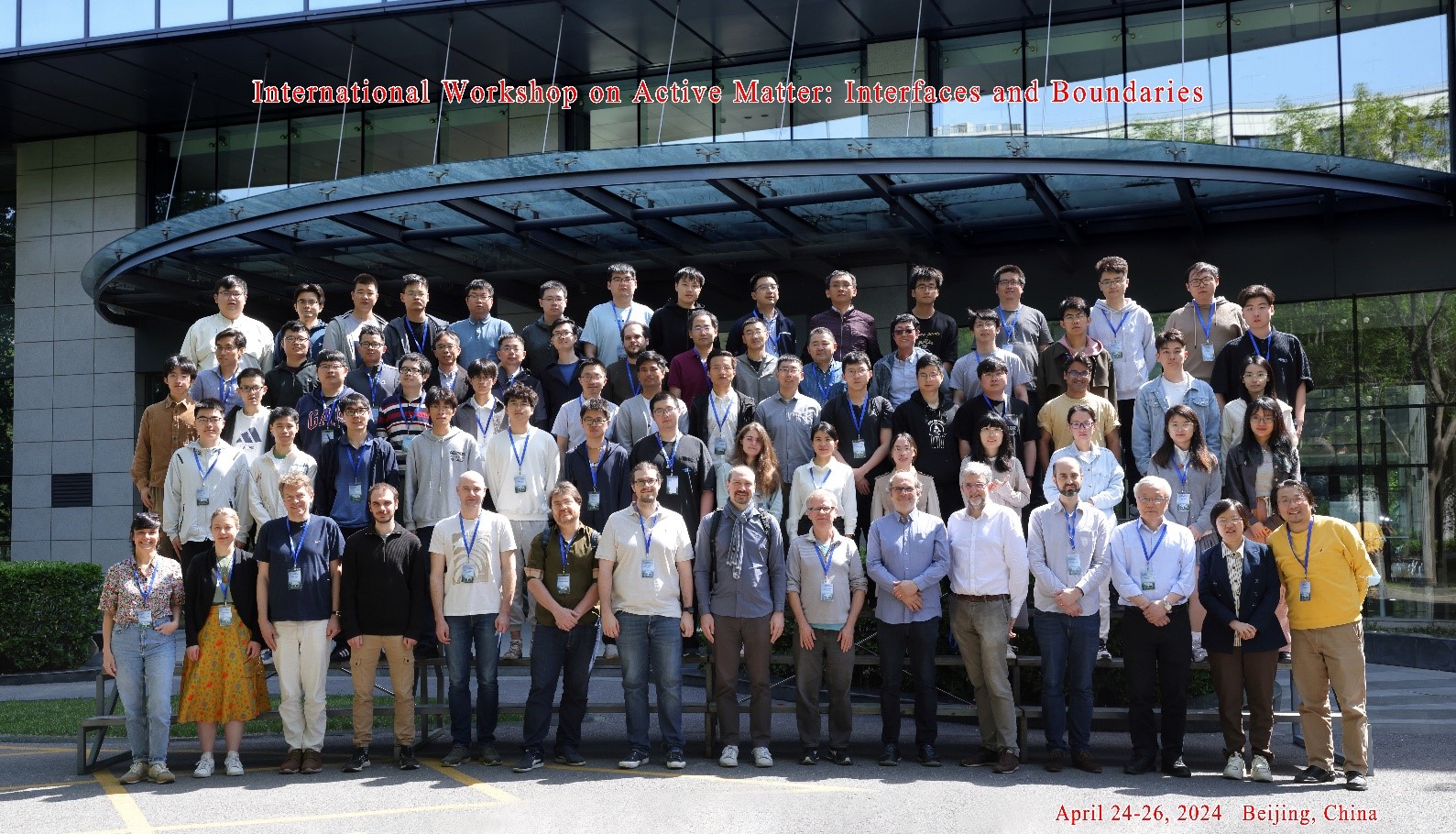The event on Active Matter: Interfaces and Boundaries organized by Complex System Division, Beijing Computational Science Research Center, has been successfully held at CSRC during April 22-26, 2024.
Active matter generally designates systems comprising constituents that transform energy stored internally or gathered form the environment into mechanical work. Many situations, at all scales, fall under this broad umbrella. Almost all living systems are included, but there are also numerous synthetic, man-made ones. It is then no surprise that over the last 20 years or so, active matter has emerged as an important multidisciplinary field. It is still growing fast, as testified by many indicators. Statistical physics, with its toolbox and mindset, is central to approach active matter systems, which are out of equilibrium 'in the bulk', and are spanned by myriads of stochastic and nonlinear processes and mechanisms. It is thus no surprise that computational work is central in many active matter papers.
A lot of the numerical research performed so far has dealt with collections of self-propelled particles evolving in domains with periodic boundary conditions. This rather unrealistic situation dispenses from having to deal with boundaries, a useful first step to consider. But over the years evidence has accumulated showing that boundaries play a crucial role beyond their obvious effect of blocking active motion: they have far-reaching influence on the bulk of active systems. For instance, mechanical pressure and surface tension, in active matter systems, depend on the nature of the boundaries and on the interaction rules of particles with these walls. Other well-known results showed that passive objects in active baths induce long-range currents, that small obstacles in large flocks can reverse the global flow, etc. Evidence accumulates about the role of boundaries, but we are lacking a comprehensive approach, or even some attempt at synthesizing these results.
A central theme in the statistical physics of active matter is that of phase separation. The most famous instance is the so-called motility-induced phase separation (MIPS), whereby active particles only interacting via repulsive forces can spontaneously phase separate into a dense phase surrounded by a sparse gas. Even the archetypical phenomena of flocking, as exhibited by the Vicsek model or the Toner-Tu theory, are best described as resulting from a phase separation scenario. Whenever phase separation occurs, interfaces appear. In the presence of chirality, they may be the location of edge currents. All the interfaces have not been studied much so far, even though one can argue that thy are the structures most revealing the non-equilibrium nature of active matter systems. In addition, in resonance with the above remarks about boundaries, active interfaces defined by the phases they separate can be suspected to influence these phases over large scales.
Boundaries and interfaces can thus both be seen as lower-dimensional structures that have subtle, far-reaching effects on bulk active matter. Because they are both 'unavoidable' in many real situation, studying their influence is crucial to any understanding of active matter.
The event was comprised of a two-day tutorial and three-day topical sessions, which has attracted over 100 participants from China and abroad to attend. Seven researchers gave lectures on “Building microscopic models of cells sheets “, “The multiple faces of hydrodynamics in active matter”, “Self-organization in active matter: From motility-induced phase separation to collective motion”, “Odd viscosity and odd elasticity in chiral active matter” and “How things move: from Brownian colloids to swarming robots” at the tutorial, and 22 speakers presented wonderful talks at the topical sessions. The five-day event has provided excellent opportunities for networking and the development of research linkages between participants.




